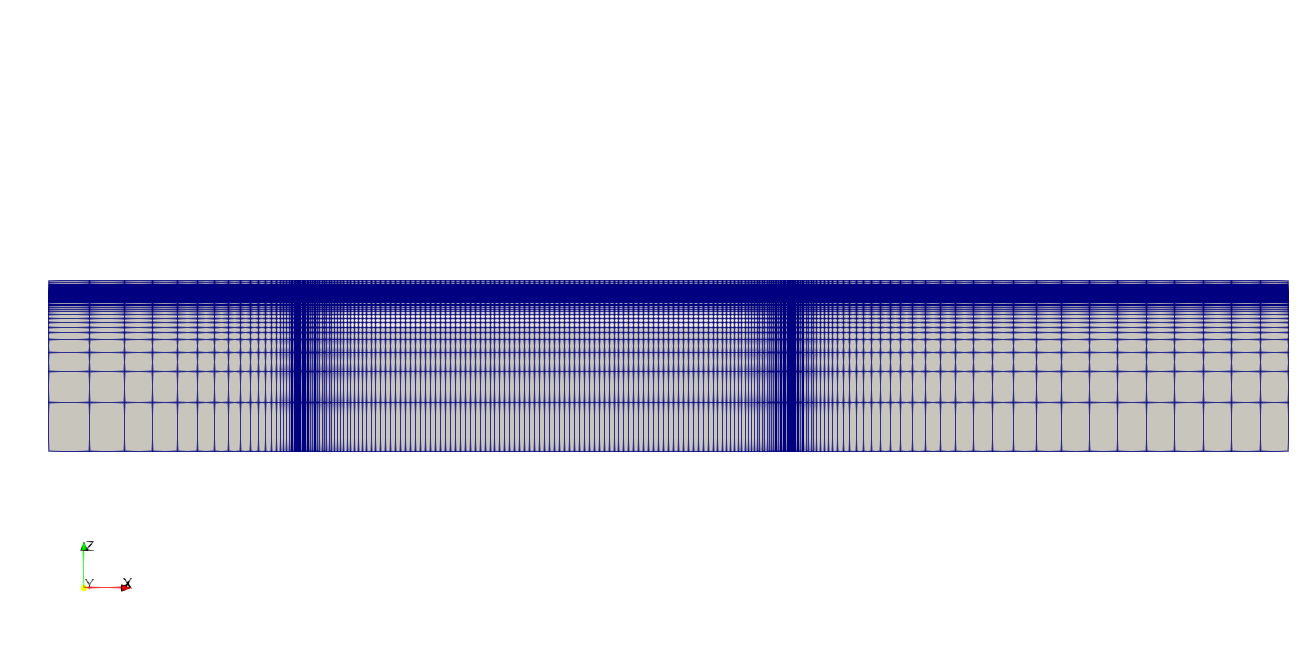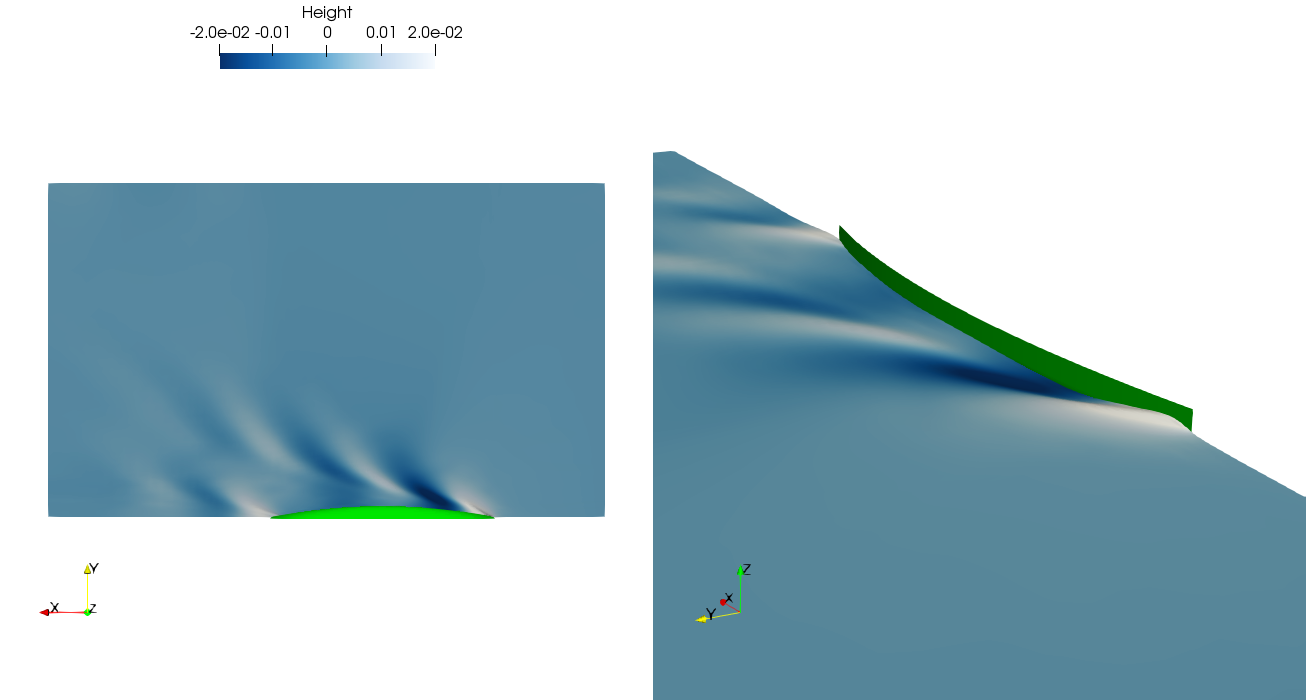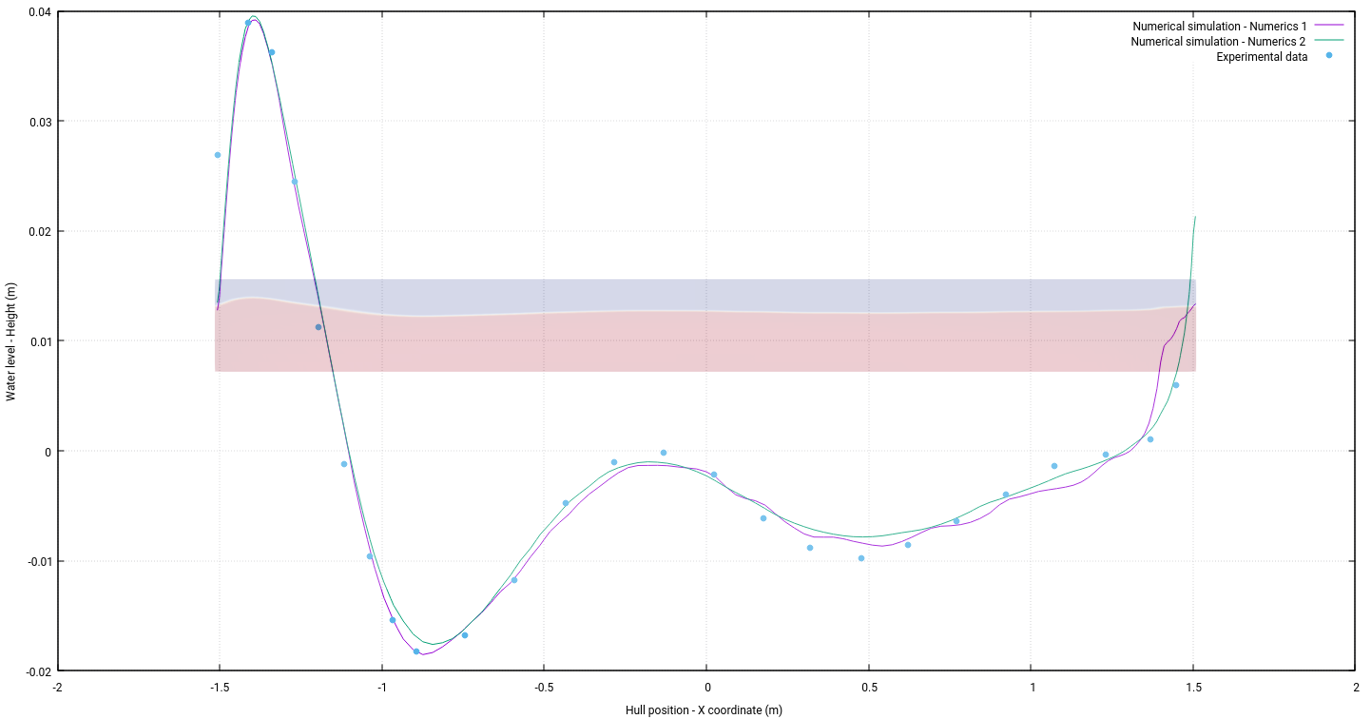OPENFOAM VALIDATION CASES
Wigley hull - VOF with free surface
Hereafter, we compute the flow around a ship hull using the VOF method. As a reference case, we use the Wigley hull [1, 2], which has plenty of experimental data to compare with. In this case, we measure the water surface level on the hull surface, and we compare the numerical results obtained with OpenFOAM, against the experimental results available in the literature [1, 2, 3, 4].
The simulations were conducted using the VOF solver distributed with OpenFOAM, and to reach a steady state, we used local time stepping (LTS). For turbulence modeling, we used the k-Omega SST turbulence model with wall functions, and the y+ value ranges between 30 and 150. The Froude number is equal to 0.267.
 |
 |
|
| Domain mesh. |
||
 |
||
| Free surface visualization. The water surface is colored by height. The flow is coming from right to left. |
 |
||
|
Water level on hull surface. Numerics 1 corresponds to an unbounded method, whereas numerics 2 is a stable and bounded method. |
| \( c_d \) experimental [1, 2, 3, 4] | \( c_d \) OpenFOAM |
|---|---|
| 0.0041-0.0048 | 0.0044 |
warning The experimental values were extracted from plots illustrated in references [1, 2, 3, 4].
We can not guarantee the accuracy or precision of this information.
References:
[1] Turbulent Flows Past Ship Hulls. Sarda, O. P., PhD thesis, University of Iowa, 1987.
[2] The Summary of the Coorperative Experiment on Wigley Parabolic Model in Japan. ADP003037, 1983.
[3] Numerical Modeling of Resistance for a Conceptual Seatrain. CD-adapco Academic Paper Contest, 2011.
[4] Computation of Hydrodynamic Characteristics of Ships Using CFD. International Journal of Materials, Mechanics and Manufacturing, 2017.
